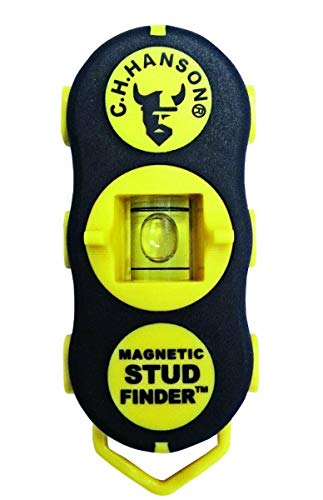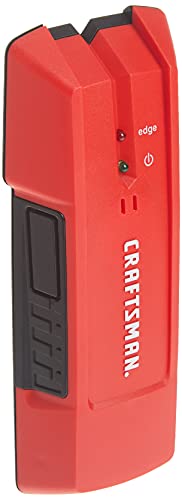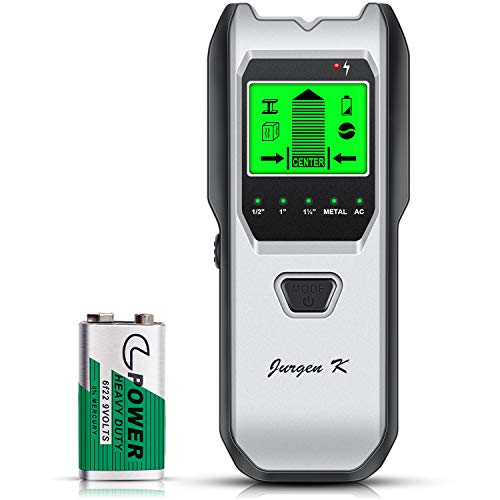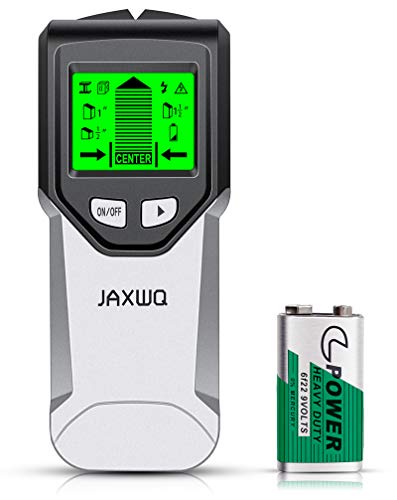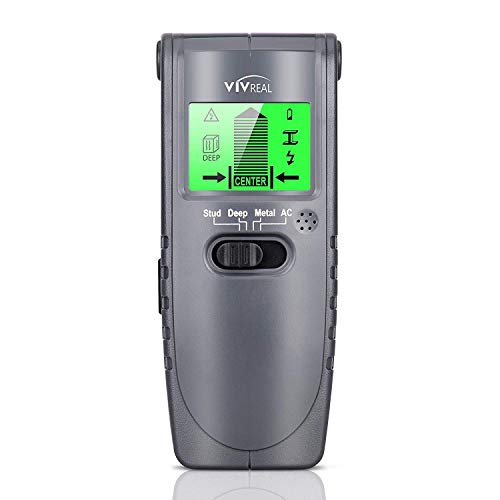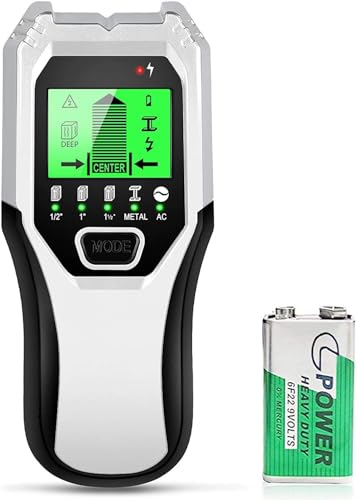The Best Stud Finders for Home DIYers
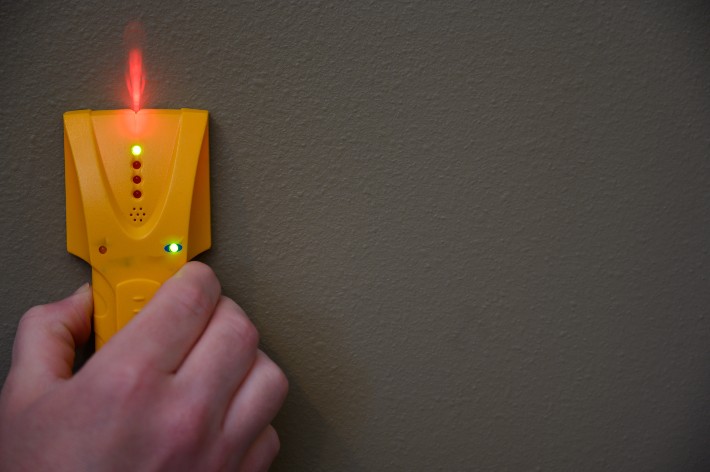
- Best Overall: Franklin Sensors Professional Stud Finder Shop Now ➔
- Runner Up: C.H. Hanson Magnetic Stud Finder Shop Now ➔
- Honorable Mention: CRAFTSMAN Stud Finder Shop Now ➔
- Contender: Jurgen K Stud Finder Shop Now ➔
- Also Consider: JAXWQ Stud Finder Shop Now ➔
- Also Consider: Vivreal Stud Finder Shop Now ➔
- Also Consider: Tavool Stud Finder Shop Now ➔
Top Stud Finders in 2024
Best Overall
If you’re sick of going back and forth on the same piece wall trying to make sure you’ve got a clear reading on your stud, this is the finder for you. Consistent and reliable, the Franklin stud finder is one of the most popular on the market and it lives up to the enthusiasm.
Pros
- High Accuracy
- Built in Bubble Level
- LED lights for simpler detection of studs
Cons
- Higher price point
Key Features
This device is easy to use and eerily accurate. The moment that it detects a stud, it will light up and thanks to the three LEDs you’ll be able to pinpoint the location without needing to reset and readjust. It works through thick and thin and your days of detecting ghost studs are over.
Runner Up
This magnet based stud finder is the ideal tool for those who find that the bells and whistles that manufacturers put on the newer models are not worth the price of admission. No batteries are required to power the Handon 03040 up, you won’t find yourself in a pickle needing double AAs. If there are nails in your wall studs, you don’t need to fret, this device will do the job.
Pros
- Powerful magnet with a good range
- Easy soft grip that allows for precision and stability
- Pocket sized, it’s compact and unintrusive
Cons
- Low tech option
Key Features
Equipped with two strong earth magnets, it will get the job done fast and it won’t be too picky about it. The level is a great tool and as long as you know how to properly use it, you’ll save yourself some money and quite a bit of frustration.
Honorable Mention
With a depth range of ¾ inch, this stud finder will work through any fabric or wallpaper. Sturdy and long lasting, it’s shock resistant and effective. What’s more, this simple and affordable option comes with edge detection, which is a feature that a lot of the simpler stud finders lack.
Pros
- Affordable but effective tool
- ¾ Inch depth of detection
- Works on edges as well
Cons
- No smart functions
Key Features
As long as you let it calibrate and know how to properly use it, this tool is spot on. You’ll need to supply the battery, but other than that, it’s smooth sailing.
Contender
The Jurgen K is a bit more than a stud finder. This tool is ideally suited to identify what’s behind the wall you want to fix your cabinet or appliance into and it will tell you exactly what to expect. It reads wiring or pipes as well as accurately detects both metal and wood studs. It’s very user friendly and comes with clear instructions that will address and troubleshoot some of the most frequently encountered issues.
Pros
- LED reads stud material
- The device autocalibrates
- Can also locate wires, pipes and joists
Cons
- Less affordable if you’re only looking for a device to find studs
Key Features
Its deep scan can detect up to 1.5 inches in depth and you’ll locate a stud center without hassle or needing any sort of know-how. Ideal for beginners and reasonably priced for what it can do, it’s a great overall option.
Also Consider
You’ll never have to worry about drilling into a live electrical wire again, this stud finder scans and finds any obstacle in your way. It’s one of the best you can find in this price range and it’s beginner-friendly, but it works best if you know what you’re working with so make sure to read the instructions to get the most out of this tool.
Pros
- Reasonable price for its features
- 5 in 1 Function Detection
- LCD Display and audio alarm alert
Cons
- Will need calibration when first turned on
Key Features
Accurate and consistent, you won’t have issues with conflicting readings. Equally effective for wood or metal, it won’t cause fatigue if used for extended periods especially if you find your grip. The JAXWQ also comes with its own battery, saving you time and hassle once again.
Also Consider
A great wall scanner that’s amazing for finding studs and avoiding electrical wiring. It’s LCD display will provide accurate and specific information and it will make sure there’s no accidents in the process. Once it locates the center of a stud you’ll also receive a useful sound alert.
Pros
- Four scanning modes depending on task
- Sound and graphical alert
- Easy to Use
Cons
- Doesn’t come with battery
Key Features
The Vivreal stud finder is sturdy and will work against a variety of surface types, whether you’re working on corners or flat walls. What’s more, it’s constructed for durability so you’ll be able to enjoy it for the foreseeable future without needing a replacement.
Also Consider
You can use this stud finder to find wiring, pipes, metal or wood as deep as 2 inches into drywall or plaster. The LCD and audio alert lets you know when you’ve identified the center of the stud and lets you know if you’re near a live wire you might want to avoid. The intuitive interface makes it a dream to operate and as long as it’s properly calibrated there will be no accuracy issues with the Tavool wall scanner.
Pros
- 5 scanning modes that go as deep as 2 inches
- Easy to use even for beginners
- Will caution if it identified live wires
Cons
- 2-3 second initial calibration everytime it powers on
Key Features
This device eliminates the learning curve that you’ll have to go through with lower tech options and its precise readings will leave you confident that you know exactly what you’re doing regardless of your level of experience.
Best Stud Finders Buying Guide
Before diving into features and functions, you should determine what kind of stud finder you would need. In order to figure that out, you’ll need to assess your own needs. How often will you be using it and how important is accuracy for you? Are you an experienced DIY-er or just a beginner with an appliance to mount? Once you have your own prerequisites, navigating features, functions, and types becomes a breeze.
What Different Types of Stud Finders Are There?
There are three main types of stud finders ranging from the low tech to the high tech and high price.
Magnetic stud finders
A magnetic stud finder works through a powerful neodymium magnet that is able to detect nails or screws in the stud. More powerful magnets have made this option more and more accurate while the price remains reasonably inexpensive. A magnetic stud finder is very useful for detecting the location of metal drywall screws or nails.
It’s an excellent choice if you’re just looking to use your stud finder once in a blue moon and don’t want to invest in an electronic one. If you have the patience, it might even be a good long-term solution. However, keep in mind that if you’re a complete beginner, a Youtube tutorial will go a long way when it comes to getting the most out of this tool.
Electronic stud finders
Electronic stud finders are currently the most popular option as they’re very beginner-friendly and quite accurate. Powered mostly by two AA batteries, these stud finders usually do more than just find the stud and locate its center. Most have additional detection for AC wiring and piping, as well as wood and metal detection. Some electronic stud finders also come with an LCD screen for a better user experience.
These work by detecting density changes in the wall and they run a bit pricier than their magnetic counterparts. However, we were able to easily find something in the $20 to $30 price range that will work well for years to come. If you find that ease of use and additional detection are good selling points, this is the stud finder for you.
Ultrasonic stud finders
This is the priciest option of the bunch and for good reason. They use sound waves to determine what’s in the wall and they’re usually used in a construction environment rather than for home projects. If you’re serious about your DIY projects or you work in the construction business, this might be the ideal gadget for you.
Other Features and Considerations
Calibration
Most metal stud finders (electronic ones included) will need to be calibrated before use. In fact, this is one of the reasons why so many people end up returning their stud finders, throwing their arms in the air, and declaring that the gadget was inaccurate.
Reading the instructions on how to properly calibrate your stud finder will make a huge difference. Also, it will likely be the determining factor in whether your experience is successful or not. Of course, there are many such tools that simply lack the accuracy needed even for home projects. But, most of the time, reading the manual and the troubleshooting instructions will take little time but make a huge difference. As the normal process goes, place the stud finder flat against the wall, press and hold the power button, and wait for 1-2 seconds before calibration starts.
AC wires detection
This is one of those features that you don’t care about until you do. Most electronic models will have AC wires detection feature and it’s something to consider if you think that there are any home improvement projects in your future where drilling or mounting appliances or cabinets risks hitting live electrical wires.
Pipe detection
Another common feature for electrical stud finders is one that you’ll want to take into account the more projects you do. The device will usually have a different function or LED color to let you know if you’re in an area near a pipe.
Sensor depth capacity
The depth at which your stud finder is used to detect is important. A good one should be able to detect at least 1.5 inches into your drywall and probably a bit deeper if you need to be able to spot copper pipe wiring or metal pipes.
Center targeting
Another great feature to watch out for is center targeting. While finding a stud can be enough, the best stud finder will also let you know when you’ve identified the center of a stud, which can save you a lot of time and calculations. Make sure to recalibrate and follow the manufacturer’s instructions if you plan on using this feature.
How To Use a Stud Finder
Once you select a product of your choice and purchase it, you will need to know the ways to use it.
- Turn on the power button of the stud finder.
- Once you see the green light indicator, the stud finder is ready. Ready lights indicate that calibration is successful.
- The red arrow lights up sequentially as the stud finder nears a target.
- Position the stud finder against the wall, before starting to drill the wall in one direction.
Check the video from StatUpBox to learn simple, easy ways to use a stud finder.

People Also Asked
How does a stud finder work?
The first stud finders worked by using magnets to detect nails or other ferrous materials. Newer models work by detecting differences in the density of the material behind the wall.
How do you tell if you hit a stud?
The best way to identify whether you’ve hit a stud is the old fashioned way - by knocking. A solid sound will mean that there is a stud behind the drywall while a more hollow one means no stud.
Can my phone find studs?
There are some apps that use the phone's built-in magnetometer to locate metals in the wall however these won’t be as strong and won’t be able to read as deep as a dedicated tool like a stud finder.
Do stud finders really work?
Yes, stud finders work. However, in order to ensure precision you will need a good stud finder and a bit of knowledge on how to operate it. If you go for a magnetic or low tech option, you should spend a few minutes making sure you’ve got the hang of using it. If you’re going for a wall scanner, you should be good to go after an initial calibration.
Article Contributors
The Woodsmith Review Team’s product reviews and in-depth guides are here to help you choose the best tools and gear to build great-looking projects confidently. Woodsmith is reader-supported: When you buy through links on our site, we may earn an affiliate commission. Large language models (like Artificial Intelligence) may have been used in the research and creation of the content.
Inquiries regarding specific articles or product testing should be sent to aimperiapt@gmail.com


